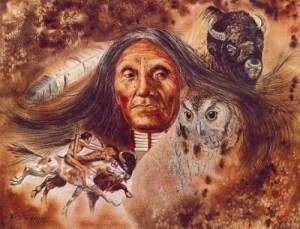The notion of binaries or opposites is deeply entrenched in Western culture and thought. Although it seems perfectly natural to perceive and categorize the world in terms of dichotomies (black-white, either-or), what seems natural is actually learned. Our teacher in this regard is Aristotle, who was so impressed by the Pythagorean Table of Opposites that he founded an entire system of logic on the principles of identity and contrast. One thing cannot be another and it is the contrast between opposites that creates meaning.
When we bring these western habits of thought to the concept of consciousness, our learned reflex is to dichotomize and contrast with its supposed opposite: unconsciousness. We are either conscious or unconscious. This is, however, a mistake. I was reminded of this while reading David Lewis-Williams’ Inside the Neolithic Mind — Consciousness, Cosmos and the Realm of the Gods:
Human beings are not either conscious or unconscious, as may be popularly supposed. Normal, everyday consciousness should rather be thought of as a spectrum. At one end is alert consciousness — the kind that we use to relate rationally to our environment and to solve the problems that it presents. A little further along the spectrum are more introverted states in which we solve problems by thought. Relax more and you are day-dreaming: mental images come and go at will, unfettered by the material world around you. Gradually, you slip into sleep and the hypnagogic state, possibly with vivid hallucinations. From there, you drift into normal dreaming, a world of changing forms and impossible circumstances.
Because fluctuating consciousness is a human universal, all societies must come to terms with it or make sense of it. Values are assigned to different parts of the spectrum. Lewis-Williams argues that religion is founded on these fluctuations and develops “out of the socially situated spectrum of consciousness.” It is a powerful argument and one that is at least partially confirmed by Native American dream traditions.
In “Dreams, Theory, and Culture: The Plains Vision Quest Paradigm,” Lee Irwin observes that dreaming is central to Native American traditions:
To understand the visionary world of Native American religions, it is necessary to overcome a rational bias that would reduce dreaming to an expression of the “irrational” or “epiphenomenal” mind. Because we all dream, it would seem superfluous to point out the continuity that exists between our dreaming and waking lives.
Yet it is a mark of modern consciousness that dreaming is strongly identified with the “pre-rational” mind and with a substratum of “primitive” instinct and emotion beneath the threshold of rational conceptualization. The dreaming basis of culture must engage our attention as something far more complex and subtle than a purely sensory and empirical waking model of consciousness permits.
In the Native American context, there is no separation between the world-as-dreamed and the world-as-lived. These are states integral to the unifying continuum of mythic description, narration, and enactment. In contemporary, non-indigenous culture, the distinction between waking and dreaming is largely a consequence of culturally reinforced rational theories of mind and has resulted in a bifurcated world view for most Euroamericans.

It seems fairly safe to say that dreaming played an important role if not central role in ancient religions. It surely is no accident that Australian Aborigines characterize the foundational elements of their supernaturalism as “Dreamtime.” It also seems fairly safe to say that as religions became more organized and systematic (following the Neolithic transition), dreaming is displaced by doctrine and belief as the source of the supernatural.
Reference:
Irwin, L. (1994). Dreams, Theory, and Culture: The Plains Vision Quest Paradigm American Indian Quarterly, 18 (2) DOI: 10.2307/1185248



